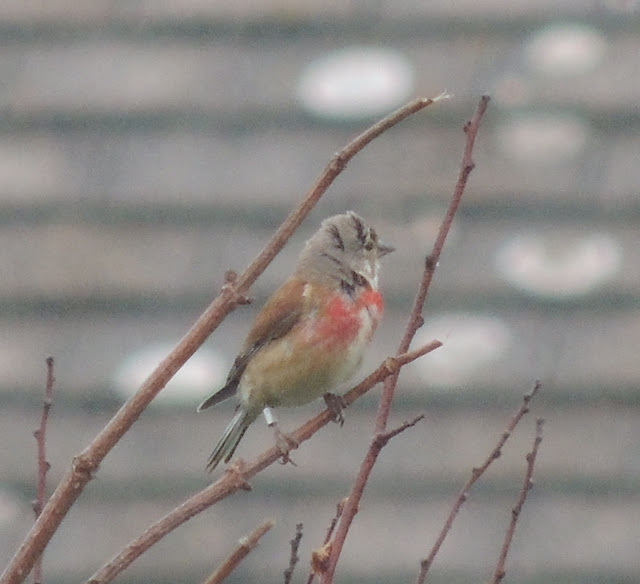 |
| Badger Portrait - Dorset Badger Watch |
 |
| Lighthouse at Portland Bill |
 |
| Bob of the Flowers |
Today we wnt birding. From our base in Bournemouth we eventually found the right road and drove east to Weymouth and then south to Portland Bill. Here on a very southern part of the British Isles we looked southward onto the ocean. As [perhaps] usual the wind was blowing and we looked south towards the sea. Out among the waves Guillemots and Razorbills, to a lesser extent, powered over the waves. Joining them was the occasional Gannet. Fulmars - aka - Northern Dwarf Albatross also flew around as did Gulls - Herring, Great Black-backed, Kittiwake plus Sandwich Terns, which was a new trip bird. Both Cormorants and Shags were seen also. With perseverence a couple of Manx Shearwaters were also observed sailing through and with the wind. Heping us navigate these species was a young man, Sean. Sean was a quiet guy with a passion for birds and birding, nature and conservation. He works as a post man and birds whenever he can. Today he birded with us.
 |
| the crew overlooking Little Tern nesting area |
Under Sean's direction we visited the local Portland Bill Bird Observatory that had been highjacked by Moth enthusiasts who insisted on sharing their night's catch [with just a little too much excitement]. Actually I can't really critique their enthusiasm for moths as it would be interesting to try to work out how many thousand species of moth i have in my yard but the resources simply are not available. In the UK all of the moth species are covered within the confines of a couple of small volumes - over 2400 moth species have been recorded in the British Isles -. The Australian moth fauna is at least 10 times greater - between 20 000 and 30 000 species have been recorded [with some 400 species of butterfly]. We also had a brief look through the observatory's excellent natural history bookshop. Luckily I left my glasses in the car so i could not really work out what was there.
 |
| Butterfly at Lodmor |
Next stop was a breeding pair of Peregrines plsu other species in and around a cliff site. Good views of Stock Dove plus annoying miss of a skulking but loud Lesser Whitethroat.
Lunch at a Dorset Nature Cafe was followed by waders - Sandering, Dunlin - both in good colour plus Ringed Plover plus Ruddy Turnstone. Little Egrets plus Oystercatcher were seen befoer a brief visit to a fortified area of shingle that was a breeding area for an important colony of Little Terns.
 |
| In the Bader hide - Bob, Carol, June and Berry |
A walk around an area adjacent to Lodmor RSPB reserve yielded many Common Swifts, our first Marsh Harrier, breeding Common Terns, a nice party of Long-tailed Tits, Common Pichard and ducklings, Gadwell, Mallard and Tufted Duck with many Shelduck and Canada Geese. Some saw Bull Finch. Cetti's Warbler remained invisible.
Birding finished we drove half and hour north of Weymouth to a farm that was selling Badger viewing. We were [as you can tell from the photos] successful; viewing seven badgers from their hide plus two foxes.
Hungry but contented we drove home to the hotel at Bournemouth.
 |
| European Badger - Bimbo! |
 |
| Black-headed Gull |
 |
| Black-headed Gull |
 |
| Black-headed Gull |
 |
| Dunlin in breeding finery - BIRD OF THE DAY!!!!!! |
 |
| Sly Red Fox |
 |
| flying Fulmar |
 |
| Fulmar |
 |
| male Linnet |
 |
| Mallard |
 |
| Ringed Plover |
 |
| Ringed Plover |
 |
| Shelduck |
 |
| Skylark with clover in focus! |
 |
| Common Starling |
 |
| left - Sandwich Tern; right - Black-headed Gull |
 |
| Tufted Duck drake - apparently drunk |
 |
| Tufted Duck pair |
 |
| Sea Watching with Sean - our guide |


































